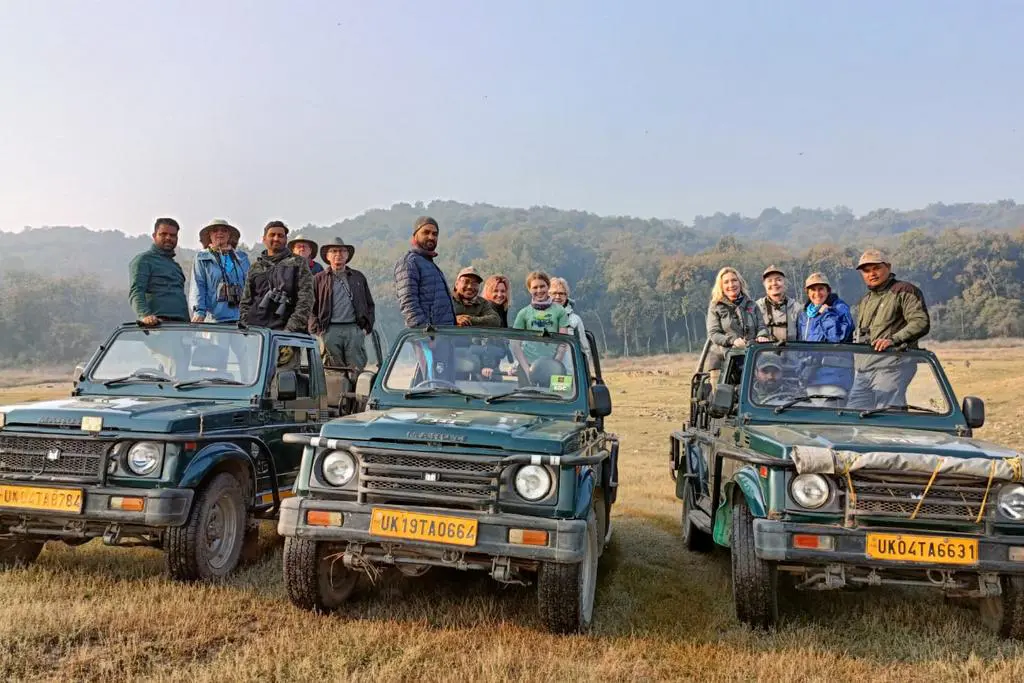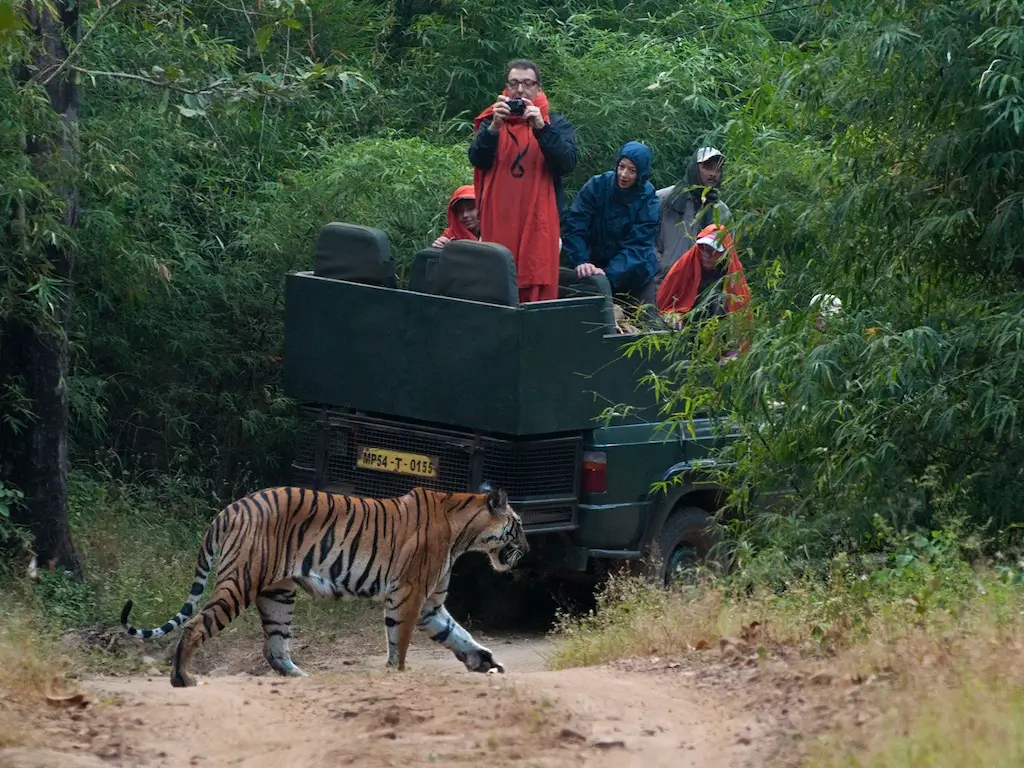At Wild Earth Safari, we understand that your visit to India’s national parks for a safari is a significant investment. Therefore, it’s crucial to familiarize yourself with the safari vehicle that will be your companion as you embark on the thrilling journey through these wildlife sanctuaries. The safari vehicles used in India are distinct from those in African national parks, and the most commonly used vehicle here is the 4X4 Maruti Suzuki Gypsy, specially suited for Indian terrains. Let’s delve deeper into why this vehicle is considered ideal for Indian safaris.

Overview of Safari Vehicles in India
- Silent Performance: One of the key reasons the Maruti Suzuki Gypsy is preferred is that it runs on petrol, making it much quieter than diesel-powered vehicles. This silence ensures minimal disturbance to wildlife, enhancing the safari experience.
- Open and Ideal for Wildlife Viewing: The Gypsy is an open vehicle, perfect for navigating through India’s dense and lush jungles. Being open from the top and sides, it offers unobstructed views of the wilderness, allowing a deeper connection with the environment.
- Powerful and Efficient: The Gypsy is known for its power and agility. It can climb steep inclines in national parks, such as those in Kanha or Jim Corbett, without much effort, ensuring a smooth ride through difficult terrains.
- Space and Comfort: A typical Gypsy can accommodate up to six guests, plus a driver and a guide, making it an 8-person vehicle. However, to maximize comfort and space, Oyepedia Travel LLP recommends booking a maximum of four guests per vehicle. This ensures a comfortable safari experience without the crowding that can occur when fully packed.
- Open-Air Experience: Since the Gypsy has no roof, it allows you to enjoy the fresh air and the scenery, but it’s important to be prepared for the sun or dust. We recommend carrying headgear to protect yourself from the harsh sun or any flying dust particles.
- Maneuverability: Unlike larger safari vehicles, the Gypsy is incredibly easy to maneuver through the narrow tracks of Indian national parks. It provides greater flexibility to move quietly and quickly in search of elusive wildlife.
- Photography-Friendly: The Gypsy is an ideal choice for photography enthusiasts. With its unobstructed views from all sides, it offers great angles for shooting, especially for wildlife photography. You can capture low-angle shots with blurred backgrounds, making it perfect for tiger photography.
The Safari Experience with the Gypsy

- Staying in the Vehicle: While on safari, you must remain inside the vehicle at all times and follow the guide’s instructions. The guides are well-versed in the park’s rules and the safety protocols necessary to protect both the guests and wildlife. Leaving the vehicle is strictly prohibited in tiger territory for safety reasons.
- Breakfast in the Wild: In some parks, the Gypsy’s bonnet serves as a breakfast table during morning safaris. While enjoying breakfast in the heart of the forest, you are reminded that the true essence of the safari lies in the wildlife and the forest itself, not in long pauses for meals.
- Getting Comfortable: Before embarking on a 4-5 hour safari, we recommend doing some light stretches to relax your muscles. Sitting for extended periods can be tough, so it’s important to ensure you’re physically ready for the adventure.
- Accessing the Vehicle: Getting into a Gypsy requires stepping onto a small pedal on the side of the vehicle, as it doesn’t have a conventional door. While this is relatively simple, it’s essential to be careful and ensure you enter the vehicle without haste.
Vehicle Adjustments for Photography Enthusiasts

- Extra Space for Photographers: In some national parks, the central seat in the Gypsy can be removed to accommodate photographers. This provides additional space for better equipment management and allows for low-angle shots. However, this comes with the downside of a bumpier ride since the seat removal alters the vehicle’s balance.
- Getting Low-Angle Shots: If you choose not to remove the central seat, you can still capture excellent low-angle shots. To do this, you’ll need to be agile and flexible, as you’ll have to move between the seats and lie down to capture the perfect shot.
- Space for Photographers: The Gypsy is best suited for two photographers. Professional photographers with heavy lenses often prefer to travel alone, as the limited space can become crowded when sharing with other equipment.
- Alternatives – Canter for Larger Groups: For larger groups, some parks offer a 20-seater open safari bus, also known as a canter. While this vehicle is suitable for group tours, it tends to be noisy, and photography angles may not be as ideal. Additionally, the guide usually manages the entire group, which can reduce the personalized experience.
Final Thoughts on Safari Vehicles
At Wild Earth Safari, we understand the importance of comfort, safety, and a fulfilling safari experience. The Maruti Suzuki Gypsy offers the best combination of these features for your wildlife adventure in India. Whether you’re a seasoned photographer, a first-time safari traveler, or someone simply seeking the thrill of tiger sightings, the Gypsy is the ideal vehicle to explore India’s wild heart.
For more information on the safari vehicles and to book your next safari adventure with Wild Earth Safari, don’t hesitate to contact us . We’re here to help you plan your unforgettable wildlife experience!

